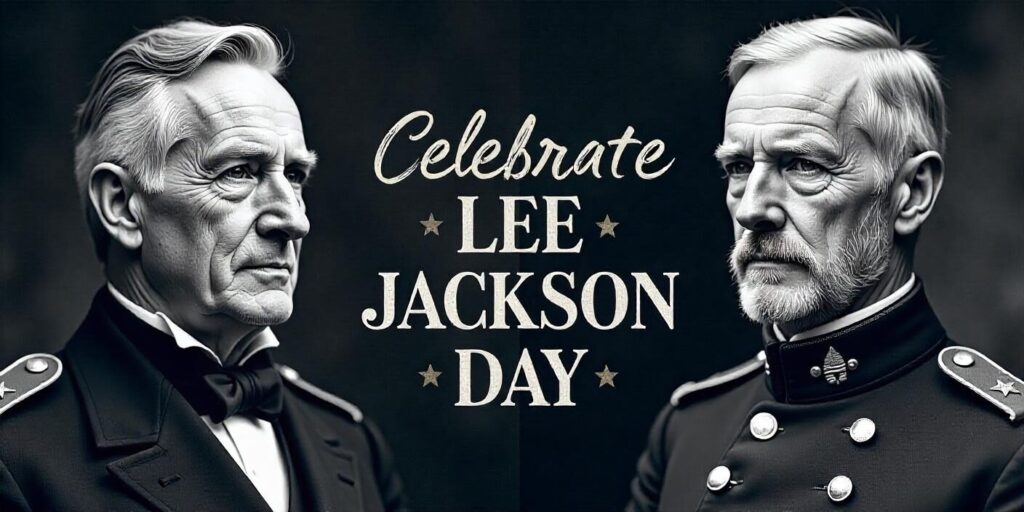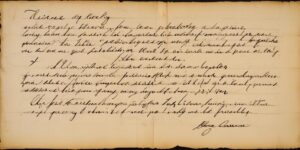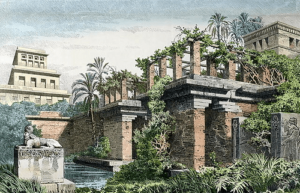This Virginia state holiday commemorates Robert E. Lee and Thomas “Stonewall” Jackson, who were confederate Civil War leaders. The actual date varies, as it is celebrated the Friday before Martin Luther King Day. In Virginia, state offices will close in commemoration and then again on Martin Luther King Day. The two holidays were merged as Lee-Jackson-King day in 1983, but changed back in 2000.
In 1889, Virginia began to commemorate Lee’s birthday, adding Jackson to the holiday in 1904.
How it’s Celebrated:
- Parades
- Balls
- Re-enactments
- Concerts
- Memorials
- Feasting
- Wreath-laying ceremonies
- Tours of their final homes
About Lee and Jackson
Thomas Jonathan “Stonewall” Jackson
Born in 1824 in what is now West Virginia, Thomas Jackson was two years old when is father died of Typhoid fever just weeks after her sister also passed away from Typhoid, leaving his mother Julia, widowed with three children. Julia struggled to support her family, moving into a small one-room apartment, earning income through sewing and teaching. After remarrying, Julia passed away after giving birth to Thomas’s half-brother. As his stepfather did not like his stepchildren, Thomas and his siblings were sent to live with relatives. Jackson attended school at times but was largely self-taught, becoming a schoolteacher himself before his military career.
Despite his school-teaching experience, Jackson struggled with West Point’s entrance examinations, but rose as an outstanding cadet due to his hard work ethic. After graduating, Jackson started out in the 1st U.S. Artillery Regiment during Mexican-American war as a second lieutenant. He received two brevet promotions, coming out as a first lieutenant. During the Mexican-American War, Jackson met Robert E. Lee. He gained recognition during this war for his decision making, speaking up against what he considered to be bad orders and sometimes refusing to follow them, turning out for the better.
In 1851, Jackson took a position as an Instructor of Artillery and professor of Natural and Experimental Philosophy at the Virginia Military Institute. Even though some of his lessons are still taught there, he was not a popular teacher at the time, as an alumni group attempted to get him fired in 1856.
Although his own family owned six slaves given as a wedding present during this time, Jackson was close to slaves growing up and dedicated his time to Sunday school classes for African Americans, said to have had a good relationship to these slaves and free blacks in his life. Jackson. Reports on Jackson’s view on slavery are conflicting, but many believe he was personally against the institution but allowed it in his household due to his religious beliefs. However, reports agree that Jackson treated all his slaves with kindness, and was even asked by two to purchase them, with one working back the money to purchase his freedom.
In 1853, Jackson married Elinor Junkin, daughter of the president of Washington College, where they resided in living quarters that would later become the home of Robert E. Lee when he served as president of the college. Ellie passed away after giving birth to a stillborn and Jackson remarried in 1857 to Mary Anna Morrison, the daughter of Davidson College’s president.
His Civil War service started in 1861 as a drill master for the Confederate Army, followed by the assembly and command of the “Stonewall Brigade,” a ground of five regiments at Harper’s Ferry. It is here that he gained a reputation for discipline, continuing strict drilling.
Stonewall’s next success occurred with the First Battle of Bull Run, bringing his brigade as reinforcements to stop the Union assault, so effective that it is here that he earned the nickname “Stonewall.” He injured his hand during the battle, losing a bit of bone but refusing medical service. After Bull Run, he was promoted to major general.
Jackson’s next endeavor was his Valley Campaign, in which he and his men marched 646 miles in 48 days, winning battles and prevented Union reinforcements from reaching Richmond. Next, he marched his army to meet Robert E. Lee at the Seven Days Battles, going on to fight in battles such as the Second Battle of Bull Run, Antietam, the Battle of Fredericksburg, after which he died of pneumonia. He ended the war in the position of lieutenant general.
Robert E. Lee
Robert E. Lee was the Confederate commander during the American Civil War. Born in 1807, his father was Henry “Light Horse Harry” Lee III, a Revolutionary War officer. He comes from one of Virginia’s earliest families, coming from England in the early seventeenth century. Not much is known of his childhood, reportedly having a rough relationship with his father, who suffered from bad financial decisions, a bout in debtor’s prison, and left his wife and six children to go to the West Indies, where he died when Robert was eleven. After that, the family was largely supported by relatives.
With an aptitude in math, Lee began to study engineering at West Point in 1825 and graduated second in his class. A second lieutenant in the Corps of Engineers, Lee started out building a fort on Cockspur Island, then transferring to Fort Monroe.
Lee married Mary Custis, the great granddaughter of Martha Washington, a childhood friend, in 1831 after first being refused her hand by Mary’s father because of Light Horse Harry Lee’s reputation. Lee moved to Washington in 1834 to work for General Gratiot, being promoted to first lieutenant in 1836. Some of his engineering projects during this time included work on the Michigan border and the St. Louis harbor.
Like Stonewall Jackson, his first significant military service began with the Mexican-American War, showing an aptitude for using landscapes to his advantage. He left the war as a Colonel and Captain of Engineers, sent to Fort Carroll in Baltimore.
During this time, Lee experienced a desire to leave the Engineering Corps and was promoted to second-in-command of the Second Cavalry in 1855, heading to Camp Cooper, Texas to protect settlers from Native American attacks. When Texas seceded in 1861, Lee was originally offered a Major General position with the Union Army, but accepted a position to command Virginia’s forces after Virginia seceded as one of the Confederacy’s five generals, feeling loyalty to his home state above all else. Many of Lee’s friends and relatives decided to fight for the Union.
Lee’s initial Civil War performance was shaky, losing the Battle of Cheat Mountain and Fort Davis, but achieving success in defending Savannah. Nevertheless, he was promoted to military adviser for Jefferson Davis, the President of the Confederacy.
Some of the highlights of Lee’s Civil War career include causing Union forces to abandon the Peninsula Campaign in the Seven Days Battles, the Second Battle of Bull Run, Second Manassas, Fredericksburg, and Chancellorsville. Lee’s biggest failure of the war was the Battle of Gettysburg, after which Lee himself reportedly said, “All this has been my fault.” As the Confederate effort continued to decline in January of 1865, Lee took the position of general-in-chief. He surrendered to Ulysses S. Grant on April 9, 1865 at the Appomattox Court House. His punishment for Lee’s involvement in the Civil War was a loss of the right to vote and also of some property.
Robert E. Lee’s Birthday
Sometimes referred to as Robert E. Lee Day, this holiday is celebrated on January 19 or January 21. Some states combine this holiday with Martin Luther King Day and a few consider it a public holiday, including Alabama, Arkansas, Georgia and Mississippi. This holiday is, depending on the state and the date, including in the celebration of Confederate Memorial Day.
This holiday is closely associated with Southern pride and is commemorated by musket salutes, parades, dinners, balls, wreath lying, and war reenactments.
Biography of Robert E. Lee
Robert E. Lee was the Confederate commander during the American Civil War. Born in 1807, his father was Henry “Light Horse Harry” Lee III, a Revolutionary War officer. He comes from one of Virginia’s earliest families, coming from England in the early seventeenth century. Not much is known of his childhood, reportedly having a rough relationship with his father, who suffered from bad financial decisions, a bout in debtor’s prison, and left his wife and six children to go to the West Indies, where he died when Robert was eleven. After that, the family was largely supported by relatives.
With an aptitude in math, Lee began to study engineering at West Point in 1825 and graduated second in his class. A second lieutenant in the Corps of Engineers, Lee started out building a fort on Cockspur Island, then transferring to Fort Monroe.
Lee married Mary Custis, the great granddaughter of Martha Washington, a childhood friend, in 1831 after first being refused her hand by Mary’s father because of Light Horse Harry Lee’s reputation. They eventually had seven children together. Lee moved to Washington in 1834 to work for General Gratiot, being promoted to first lieutenant in 1836. Some of his engineering projects during this time included work on the Michigan border and the St. Louis harbor.
Like Stonewall Jackson, his first significant military service began with the Mexican-American War, showing an aptitude for using landscapes to his advantage. He left the war as a Colonel and Captain of Engineers, sent to Fort Carroll in Baltimore.
During this time, Lee experienced a desire to leave the Engineering Corps and was promoted to second-in-command of the Second Cavalry in 1855, heading to Camp Cooper, Texas to protect settlers from Native American attacks. When Texas seceded in 1861, Lee was originally offered a Major General position with the Union Army, but accepted a position to command Virginia’s forces after Virginia seceded as one of the Confederacy’s five generals, feeling loyalty to his home state above all else. Many of Lee’s friends and relatives decided to fight for the Union.
Lee’s initial Civil War performance was shaky, losing the Battle of Cheat Mountain and Fort Davis, but achieving success in defending Savannah. Nevertheless, he was promoted to military adviser for Jefferson Davis, the President of the Confederacy.
Some of the highlights of Lee’s Civil War career include causing Union forces to abandon the Peninsula Campaign in the Seven Days Battles, the Second Battle of Bull Run, Second Manassas, Fredericksburg, and Chancellorsville. Lee’s biggest failure of the war was the Battle of Gettysburg, after which Lee himself reportedly said, “All this has been my fault.” As the Confederate effort continued to decline in January of 1865, Lee took the position of general-in-chief. He surrendered to Ulysses S. Grant on April 9, 1865 at the Appomattox Court House. His punishment for Lee’s involvement in the Civil War was a loss of the right to vote and also of some property.
After the war, Lee’s involvement with the Reconstruction led to him becoming a prominent figure in repairing relations between the North and the South. He became the president of Washington College, a position held until his death, the result of complications from a stroke. His legacy includes a town in Texas, called Robert Lee, and a statue in New Orleans.













































